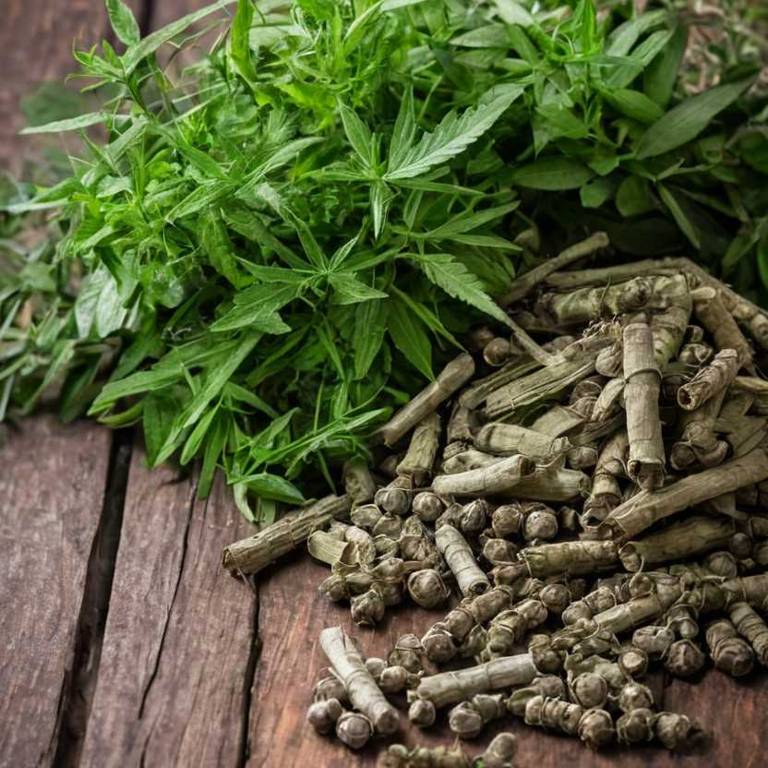By Leen Randell
Updated: Jul 06, 2024
What to know about Symplocos racemosa (sweetleaf) before using it medicinally

Symplocos racemosa, commonly known as sweetleaf, is a medicinal herb that boasts a range of health benefits, including the reduction of fever and the alleviation of digestive issues, which can significantly improve the overall well-being of those who use it.
This versatile herb is also a popular choice among gardeners and horticulturists, as it is relatively easy to grow and can be cultivated in a variety of settings. Botanically, Symplocos racemosa is a member of the Symplocaceae family and is characterized by its fragrant leaves and clusters of small white flowers.
Historically, sweetleaf has been used in traditional medicine for centuries, with references to its use appearing in ancient Ayurvedic texts and other traditional medical systems.
This article explains the medicinal, horticultural, botanical, and historical aspects of Symplocos racemosa.
What are the medicinal properties of Symplocos racemosa?
Symplocos racemosa helps with various ailments, including fever, rheumatism, and indigestion, as well as being used as a diuretic, emetic, and anthelmintic. Its roots and leaves are used in traditional medicine. The plant has been studied for its potential anti-inflammatory properties.
The active constituents of Symplocos racemosa include alkaloids, glycosides, and phenolic acids, which contribute to its medicinal properties. These compounds have been shown to have antimicrobial, antioxidant, and anti-inflammatory activities. The plant's chemical composition is complex and requires further study.
The most commonly used parts of the plant for medicinal purposes are the roots and leaves. These parts are rich in the bioactive compounds responsible for the plant's therapeutic effects. The leaves are often used in teas, while the roots are used in decoctions or dried for later use.
Improper use of Symplocos racemosa may lead to gastrointestinal upset, including diarrhea, nausea, and vomiting. Prolonged use or excessive consumption of the plant can also cause liver or kidney damage. Monitoring of the patient's condition is essential to avoid adverse effects.
When using Symplocos racemosa medicinally, precautions should be taken to avoid interactions with other medications, such as blood thinners, and to monitor for signs of allergic reactions. Pregnant or breastfeeding women should consult a healthcare professional before using the plant.
What are the horticulural aspects of Symplocos racemosa?
Symplocos racemosa grow well in well-drained soils and full sun to partial shade conditions. They require a warm climate with temperatures between 64°F to 90°F (18°C to 32°C). The ideal pH range is 6.0 to 7.0, and they prefer a slightly acidic to neutral soil condition.
When planting Symplocos racemosa, choose a location with good air circulation to prevent fungal diseases. Plant the seeds 1-2 inches deep and 12-18 inches apart in the spring or fall. Water thoroughly after planting and maintain consistent moisture levels until establishment. Avoid overwatering, which can lead to root rot.
Harvesting Symplocos racemosa involves pruning the branches to encourage new growth and promote the development of new leaves. Prune the plant in late winter or early spring, removing any dead or damaged branches. Harvest the leaves when they reach full size, typically in mid-to-late summer. Use scissors or pruning shears to avoid damaging the plant.
Common pests that affect Symplocos racemosa include aphids, whiteflies, and spider mites. Fungal diseases such as root rot, leaf spot, and powdery mildew also commonly affect the plant. Regular monitoring and maintenance, including pruning and watering, can help prevent infestations and diseases.
What are the botanical aspects of Symplocos racemosa?
Symplocos racemosa is a deciduous shrub or small tree with a single main stem, 3-8 meters tall, with a broad, rounded crown and smooth grey bark.
The taxonomical classification of Symplocos racemosa places it in the family Symplocaceae, order Ericales, class Magnoliopsida, subclass Asteridae, phylum Magnoliophyta, kingdom Plantae.
Several variants of Symplocos racemosa are recognized, including S. r. var. racemosa, which has a more compact growth habit, and S. r. var. parvifolia, which has smaller leaves.
Symplocos racemosa is native to tropical Asia, specifically in China, India, Indonesia, Malaysia, the Philippines, and Sri Lanka, and is also found in parts of Africa and the Pacific Islands.
The life cycle of Symplocos racemosa typically begins in spring, when new growth appears as axillary buds, followed by the production of catkins in late spring, which are pollinated in early summer, leading to the ripening of fruit in autumn.
What are the historical aspects of Symplocos racemosa?
Symplocos racemosa is a plant with a long history of use in traditional medicine. In ancient times, its leaves and bark were used to treat various ailments, including fever, rheumatism, and skin conditions. It was also used as a sweetener.
In Hindu mythology, Symplocos racemosa is associated with the goddess Lakshmi, who is often depicted with a garland of the plant's flowers. In some myths, the plant's leaves are said to have been used by the gods to treat their wounds. The plant's association with Lakshmi highlights its significance in Hindu culture.
In many cultures, Symplocos racemosa is a symbol of love and devotion. In Hindu weddings, the plant's flowers are used in the ceremony to symbolize the union of the couple. In some cultures, the plant's leaves are used in rituals to promote fertility and prosperity. The plant's symbolic meanings are deeply rooted in its cultural significance.
Historical texts, such as the Ayurvedic text Charaka Samhita, mention Symplocos racemosa as a medicinal plant with various uses. The text describes its properties and dosages for treating various ailments. In another text, the Materia Medica of Dioscorides, the plant is mentioned as a sweetener and a remedy for skin conditions.
Archaeological artifacts, such as pottery and coins, have been found with depictions of Symplocos racemosa. In some ancient temples, the plant's leaves and flowers are depicted in intricate carvings and reliefs. The plant's presence in these artifacts highlights its cultural significance and use in ancient times.